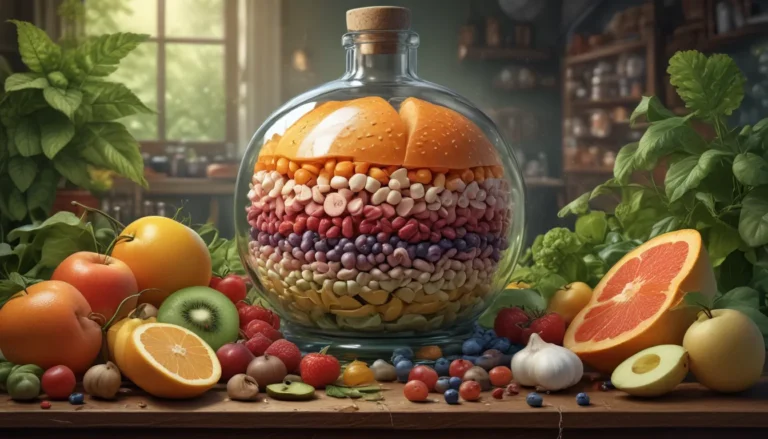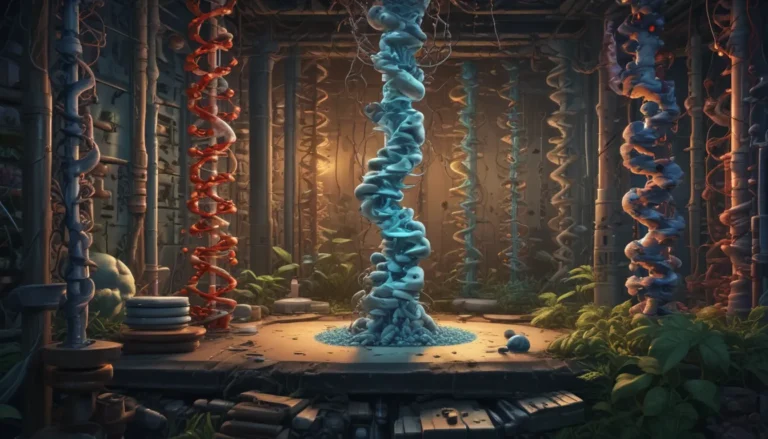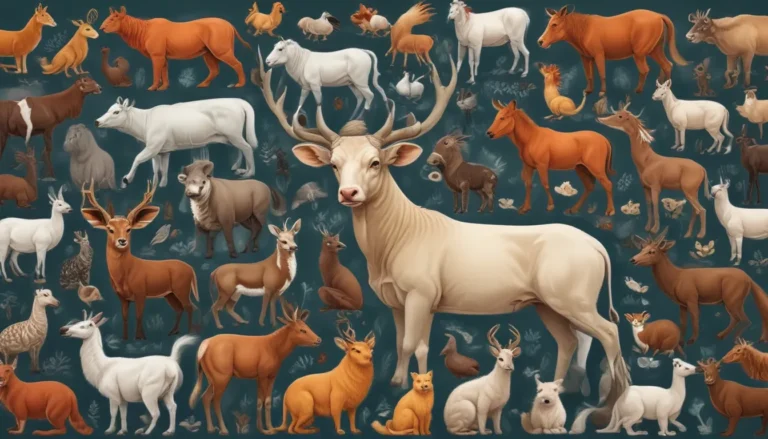A Note About Images: The images used in our articles are for illustration purposes only and may not exactly match the content. They are meant to engage readers, but the text should be relied upon for accurate information.
Autotrophs, also known as primary producers, are a captivating group of organisms with the remarkable ability to create their own food, sustaining life on Earth. They play a crucial role in the ecosystems by providing energy and nutrients to other organisms through processes like photosynthesis and chemosynthesis. From towering trees in lush forests to microscopic algae in the depths of the ocean, autotrophs come in a variety of forms, showcasing the incredible diversity of life on our planet.
In this article, we will embark on a fascinating journey into the world of autotrophs and uncover 20 unbelievable facts about these self-sustaining organisms. From their unique adaptations to their astonishing abilities, autotrophs demonstrate the resilience and diversity of life. Let’s delve into the secrets of autotrophs and gain a deeper understanding of their vital role in sustaining the delicate balance of ecosystems.
Discovering the Wonders of Autotrophs:
-
Autotrophs Are Self-Sustaining Organisms:
These incredible organisms have the exceptional ability to produce their own food through a process called photosynthesis. -
They Are the Primary Producers in Ecosystems:
Autotrophs form the foundation of the food chain by converting sunlight into energy-rich organic compounds. -
Autotrophs Can Be Found in Various Habitats:
From lush green forests to the ocean depths, autotrophs thrive in almost every ecosystem on Earth. -
They Come in a Variety of Forms:
Autotrophs range from microscopic algae and cyanobacteria to macroscopic trees and plants. -
Autotrophs Play a Crucial Role in Maintaining Oxygen Levels:
Through photosynthesis, they release oxygen into the atmosphere, essential for sustaining life. -
Some Autotrophs Can Survive in Extreme Conditions:
Certain autotrophs, like extremophilic bacteria, thrive in harsh environments with high temperatures, acidity, or salinity. -
Autotrophs Can Reproduce Through Various Methods:
While some utilize asexual reproduction, others employ sexual reproduction to ensure genetic diversity. -
They Have Adapted to Different Light Conditions:
Autotrophs in shady areas have evolved to absorb low-intensity light, while those in bright sunlight have developed mechanisms to protect themselves. -
Autotrophs Have Unique Biochemical Pathways:
They use complex processes like the Calvin cycle or the C4 pathway to convert carbon dioxide into organic molecules. -
Some Autotrophs Are Capable of Chemosynthesis:
Certain autotrophs can obtain energy by converting inorganic compounds into organic matter. -
Autotrophs Are Incredibly Efficient at Utilizing Sunlight:
They can convert a significant amount of absorbed light into chemical energy, making them highly productive within ecosystems. -
Autotrophs Provide Food for Heterotrophs:
By being consumed by other organisms, autotrophs form the basis of the food web and support a diverse range of life. -
Some Autotrophs Exhibit Symbiotic Relationships:
For example, lichens are a combination of fungi and algae that work together to survive in challenging environments. -
Autotrophs Have Evolved Various Defense Mechanisms:
They may produce toxins or develop physical defenses like thorns to protect themselves. -
They Contribute to the Carbon Cycle:
Autotrophs absorb carbon dioxide during photosynthesis, helping regulate greenhouse gases. -
Autotrophs Can Adapt to Changing Environmental Conditions:
They can adjust their metabolism or growth patterns in response to factors like temperature and nutrient levels. -
Autotrophs Can Be Used in Bioremediation:
These organisms can remove pollutants from the environment, aiding in cleaning contaminated sites. -
Some Autotrophs Have Medicinal Properties:
Certain plants and algae produce compounds with therapeutic effects used in traditional medicine. -
Autotrophs Have Existed for Billions of Years:
These remarkable organisms have been thriving on Earth since the early days of life, shaping our planet’s biodiversity. -
Biodiversity Relies on Autotrophs:
Autotrophs, from microorganisms to towering trees, contribute to the incredible diversity of life and sustain ecosystems.
Unraveling the Mysteries of Autotrophs:
Autotrophs are truly fascinating organisms with the extraordinary ability to create their own food using energy from the environment. Plants, algae, and certain bacteria play a vital role in sustaining life on Earth by converting sunlight or chemical compounds into organic molecules. Understanding the secrets of autotrophs not only expands our knowledge of the natural world but also emphasizes the interconnectedness of all living things.
Dive deeper into the mesmerizing world of autotrophs, explore the significance of chlorophyll, and discover how primary producers shape thriving ecosystems. Embark on a captivating journey with cyanobacteria, Earth’s oldest microorganisms, and learn about their pivotal role in the planet’s history and future.
Frequently Asked Questions About Autotrophs:
-
What Are Autotrophs?
Autotrophs are organisms that produce their own food using energy from the environment, typically through photosynthesis or chemosynthesis. -
How Do Autotrophs Obtain Energy?
Autotrophs obtain energy from sunlight (photosynthesis) or chemical compounds (chemosynthesis) to convert them into organic molecules. -
What Is the Role of Autotrophs in Ecosystems?
Autotrophs are primary producers that form the base of the food chain, providing energy and nutrients to other organisms. -
Can Autotrophs Survive in Extreme Environments?
Yes, some autotrophs, like extremophiles, have evolved to thrive in extreme conditions like high temperatures or acidity. -
Are All Plants Autotrophs?
Yes, all plants are considered autotrophs as they can undergo photosynthesis and produce their own food. -
Can Autotrophs Exist Without Other Organisms?
While autotrophs can produce their own food, they rely on other organisms for certain resources, highlighting their interconnectedness. -
How Do Autotrophs Contribute to Oxygen Production?
Autotrophs release oxygen as a byproduct of photosynthesis, essential for the survival of all organisms through cellular respiration. -
Are All Autotrophs Green in Color?
No, while many autotrophs contain chlorophyll, giving them a green color, others have different pigments that provide various colors. -
Can Autotrophs Obtain Nutrients from the Air?
Autotrophs primarily absorb nutrients from the soil or water through their roots or directly from their surroundings. -
Do Autotrophs Play a Role in Fighting Climate Change?
Yes, autotrophs, especially plants, help mitigate climate change by absorbing carbon dioxide through photosynthesis and storing it as organic carbon.
Explore the wonders of autotrophs and marvel at their incredible abilities that sustain life on Earth. Their contributions to ecosystems are immeasurable, highlighting the intricate web of life and the interconnectedness of all living beings. Dive into the mysteries of autotrophs and unlock the secrets of these self-sufficient organisms that shape our planet’s biodiversity and resilience.






